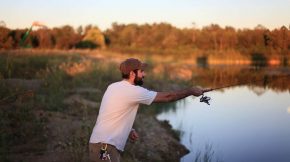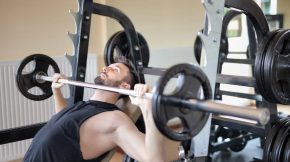Life-Saving Skills That Will Help You Save A Life
Share
In an emergency, knowing how to handle life-threatening situations is essential. Thankfully, many life-saving skills don’t require you to be a medical professional. But knowing these basics can give you the confidence to save someone’s life in your community, meaning everyone from first responders to regular people should know them.
If you want to learn these important skills for yourself or others, here are some of the most common ones that you should consider learning:
First Aid
First aid is a set of skills and techniques to help you save a life in a medical emergency. It is a combination of common sense and procedures that most people can perform independently with minimal training.
Without first aid, an injured person could suffer serious blood loss and lowered blood pressure. This could lead to a long-term medical problem or death. The Bloodborne Pathogens course gives you the knowledge and experience to provide first aid for many injuries. Most injuries involve heavy bleeding, including arterial, which is characterized by a bright red blood flow. It is a serious condition that can result in death within minutes.
If you have taken a course in first aid, you will know how to recognize a life-threatening injury and act immediately on it. These steps are known as the “ABC” s of first aid: Airway, Breathing, and Circulation.
Initially, you will want to check that the victim is breathing and has no other symptoms of illness or injury. If they are not, start rescue breathing and chest compressions as soon as possible.
If they are still not breathing, look around them and feel for any air movement in the throat or mouth. If this is not clear, move the victim’s head down and use your finger to sweep the mouth to remove anything that can be seen blocking the airway.
Basic Life Support (BLS)
Basic Life Support (BLS) is an important part of medical care. It teaches individuals how to help people who are experiencing a variety of critical health emergencies, including cardiac arrest and obstructed airways.
BLS is often offered as a training course for pre-hospital emergency personnel, such as EMTs and paramedics. Still, it’s also beneficial for any layperson who wants to help others in need. It teaches vital life-saving skills that can be applied to virtually any workplace or environment.
CPR
CPR, or cardiopulmonary resuscitation, is an emergency treatment for someone who has stopped breathing or whose heart has stopped beating (called sudden cardiac arrest). It’s easy to learn and can double or triple a person’s chances of survival.
The first step is to check for danger, call for help and find a way to clear the person’s mouth of any obstructions. Then give two rescue breaths, perform chest compressions, and switch roles. Continue these until medical help arrives.
Automated External Defibrillator (AED)
The Automated External Defibrillator (AED) is a small, lightweight device that can help save a life during sudden cardiac arrest. It automatically analyzes a victim’s heart rhythm and delivers a shock to restore the heart’s normal rhythm if it is in ventricular fibrillation or ventricular tachycardia.
Most AED devices have step-by-step voice instructions that walk the rescuer through the process of putting on electrode pads, checking for breathing and pulse, and delivering the shock. Many models also have visual displays to aid the rescuer.
Rescue Breathing
Rescue breathing is a first aid technique to help someone who has stopped breathing. It provides them with oxygen until emergency medical help arrives.
Breathing is vital to life, enabling the brain and other cells to receive oxygen. Without it, cell death can occur within minutes.
When giving patient rescue breaths, you must pinch their nose closed and blow into their mouth with a steady, firm breath. Be careful not to blow too hard, or they may overfill their lungs and become air-logged, which can lead to problems such as choking.
Climbing
Climbing skills can be a survival asset if caught in a life-threatening situation. This includes knowing how to abseil down a cliff or cross a river.
Climbers also need to be able to read the weather forecast before heading out into nature. This will help them decide which routes are safe and what gear they need.
They must also be familiar with their climbing equipment, including bolts, anchors, fixed draws, and webbing. Finally, they need to know how to inspect these items for damage.
Swimming
Swimming is one of the most important life-saving skills, as drowning is still a leading cause of accidental death in the US. It also offers a great opportunity to improve health and well-being.
Learning how to swim early in life is a good idea, as it’s one of the most important and accessible sports that everyone can do. Whether you want to get fit, enjoy the water, or compete, learning to swim will be an invaluable skill in your lifetime.
















